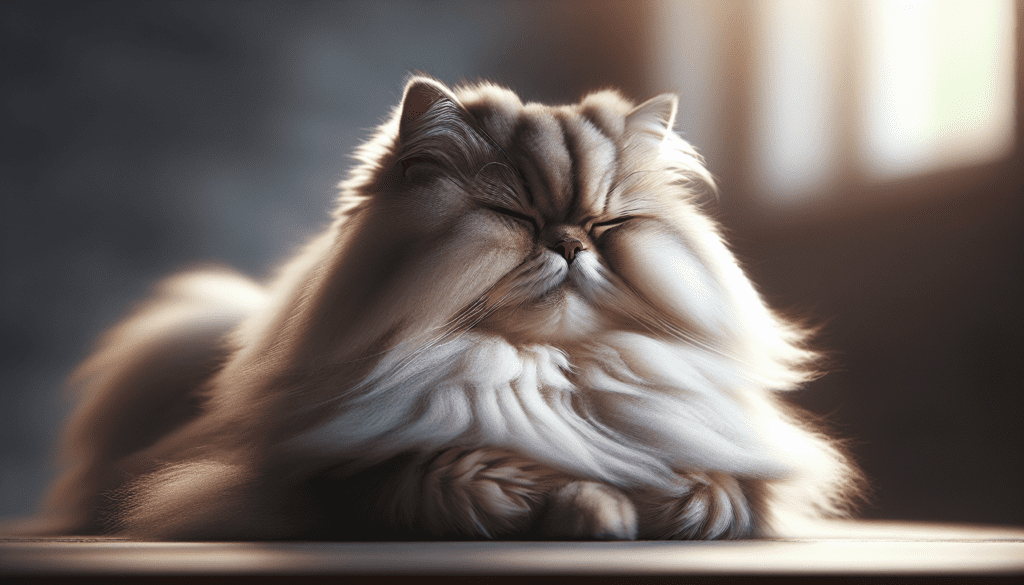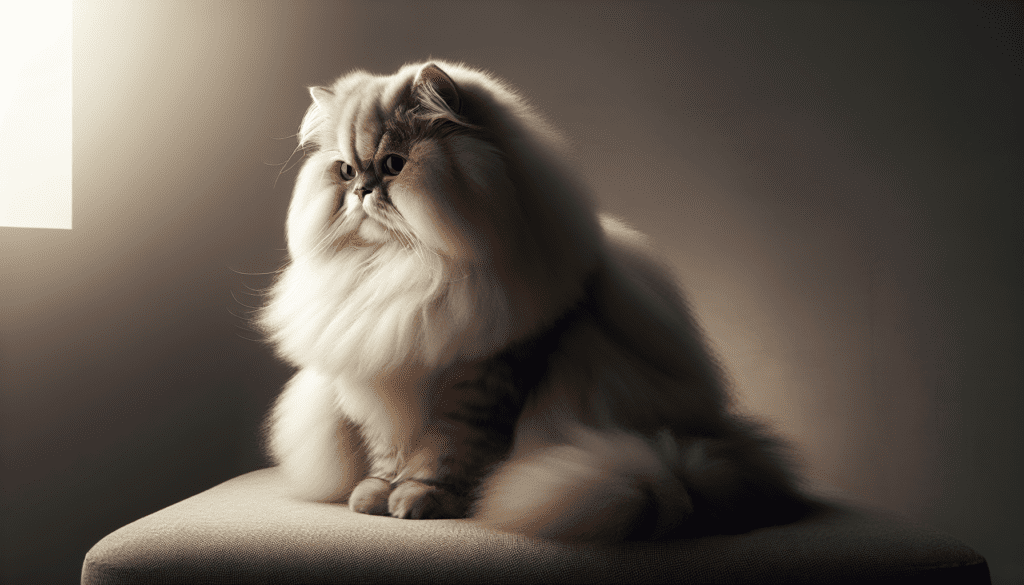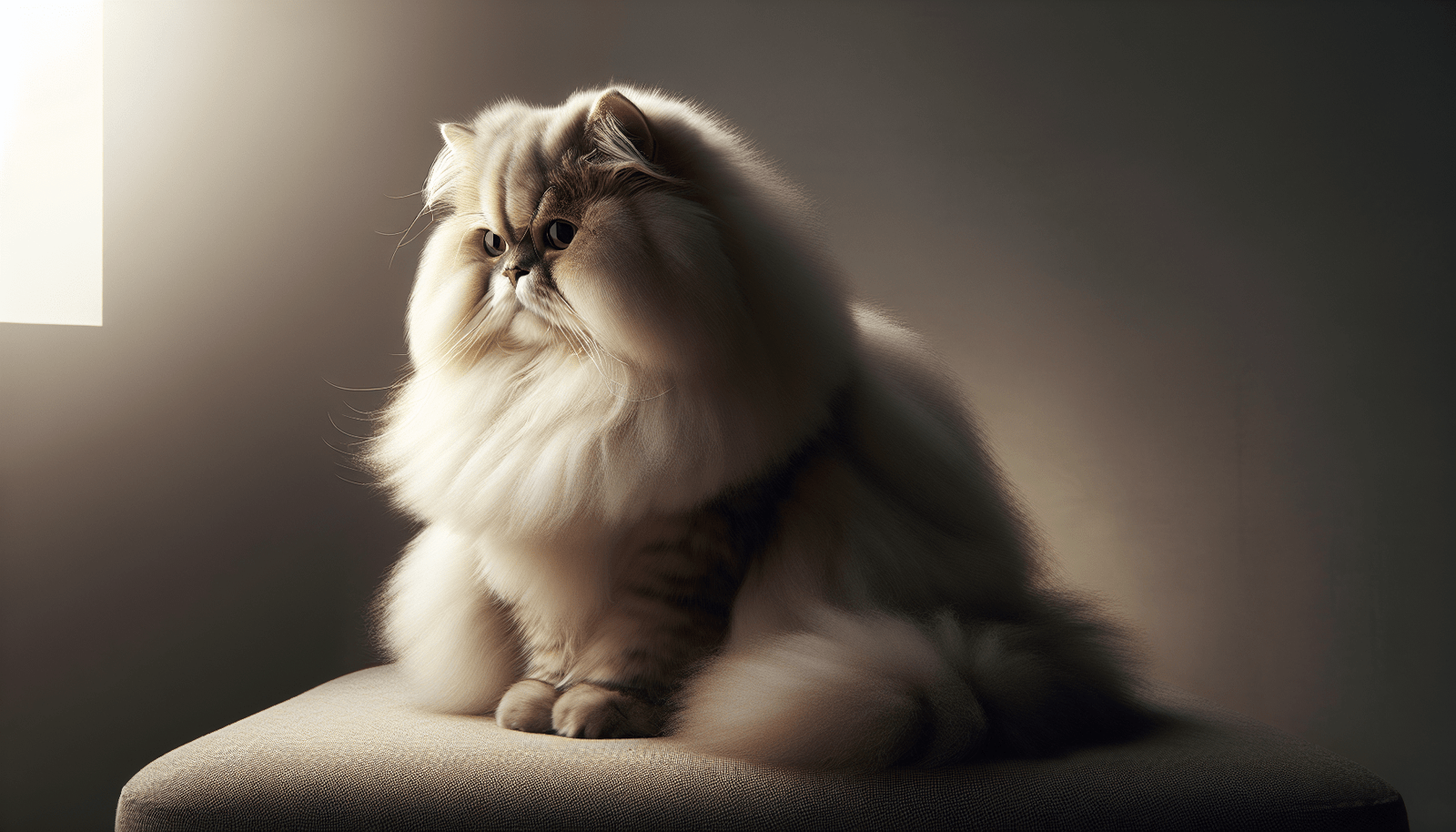Have you ever wondered what the ideal weight is for a Persian cat? Well, look no further! In this article, we will explore the average weight range for these lovable felines. Whether you’re a proud owner or simply curious about these fluffy creatures, understanding their ideal weight can provide valuable insights into their overall health and well-being. So, fasten your seatbelts and get ready to embark on a whisker-filled journey as we uncover the perfect weight for a Persian cat.

Factors Affecting the Ideal Weight
When it comes to determining the ideal weight for a Persian cat, several factors come into play. Understanding these factors is crucial in maintaining your cat’s overall health and well-being. Some of the key factors that affect the ideal weight of a Persian cat include body structure, age, gender, and activity level. Let’s take a closer look at each of these factors to gain a better understanding.
Body Structure
The body structure of a Persian cat plays a significant role in determining its ideal weight. Persian cats can have different body frames, ranging from small and delicate to large and muscular. Cats with a larger body frame tend to have a higher ideal weight range compared to those with a smaller body frame. Understanding your cat’s body structure is essential in managing its weight effectively.
Age
Age is another crucial factor that affects the ideal weight of a Persian cat. Kittens, adolescents, adult cats, and senior cats all have different nutritional needs and body compositions. As cats age, their metabolism may slow down, impacting their weight. It is important to consider your cat’s age when determining its ideal weight and make appropriate adjustments to its diet and activity level accordingly.
Gender
Gender also plays a role in determining the ideal weight of a Persian cat. Male and female Persian cats tend to have different average weight ranges. Typically, males are larger and heavier than females. However, it is essential to remember that individual variations within each gender can still exist. Understanding the differences in average weight ranges between males and females can help you assess your cat’s weight more accurately.
Activity Level
The activity level of a Persian cat is an essential factor to consider when determining its ideal weight. Cats with a higher activity level tend to burn more calories, which can influence their weight. Sedentary cats may be more prone to weight gain and obesity if their caloric intake is not adjusted accordingly. It is important to provide your Persian cat with regular exercise and engage them in interactive play to help maintain an appropriate weight.
Understanding Body Structure
To better understand the ideal weight for your Persian cat, it is crucial to have a deeper understanding of its body structure. Several factors contribute to a cat’s body structure, including body frame, muscle mass, bone density, and body composition. Let’s explore each of these factors to gain a more comprehensive understanding.
Body Frame
The body frame refers to the overall physical structure of a Persian cat’s body. Cats can have small, medium, or large body frames. The body frame of a cat influences its overall size and weight. Cats with larger body frames tend to have a higher ideal weight range compared to those with smaller body frames.
Muscle Mass
Muscle mass plays a significant role in determining a cat’s weight. Persian cats with well-developed muscles will generally weigh more than cats with less muscle mass. Muscle is denser than fat, so a cat with a higher muscle mass may appear leaner and more toned even if they weigh the same as a cat with less muscle.
Bone Density
Bone density refers to the strength and density of a cat’s bones. Cats with higher bone density may have a higher ideal weight due to the additional weight contributed by their bones. Bone density is influenced by various factors, including genetics, diet, and overall health.
Body Composition
Body composition refers to the proportion of lean muscle mass, fat, and other tissues in a cat’s body. The ideal weight for a Persian cat is not solely determined by the number on the scale but also by the cat’s body composition. A cat with a higher percentage of lean muscle mass and lower body fat percentage tends to have a healthier weight range.
Age-related Weight Variations
As Persian cats age, their weight can vary based on their life stage. Understanding these age-related weight variations is essential in providing appropriate care and nutrition for your cat. Let’s explore the weight variations that can occur throughout different stages of a Persian cat’s life.
Kittenhood
During the kittenhood stage, Persian cats experience rapid growth and development. They require a higher caloric intake to support their energy needs for growth. It is normal for kittens to gain weight quickly during this stage. However, proper portion control and balanced nutrition are crucial to ensure they do not become overweight.
Adolescence
As Persian cats transition from kittens to adolescents, their growth rate begins to slow down. They may still experience slight weight gain during this stage, but it should not be as rapid as in kittenhood. Monitoring your cat’s weight and adjusting their diet accordingly is important during adolescence to ensure they maintain a healthy weight.
Adulthood
During adulthood, Persian cats have reached their full size and weight. It is important to establish a healthy feeding and exercise routine during this stage to avoid weight fluctuations. Regular monitoring of your cat’s weight and body condition is essential, as their activity levels and metabolism may change as they age.
Senior Years
As Persian cats enter their senior years, their metabolism tends to slow down, and they may become less active. Weight gain can become a concern during this stage if their caloric intake is not adjusted. Senior cats may also experience muscle loss, which can further impact their weight. Regular veterinary check-ups and dietary adjustments are important to ensure their weight is managed effectively.
Differences between Male and Female Persian Cats
When it comes to the average weight range for Persian cats, it is important to consider the differences between males and females. Gender plays a significant role in determining the ideal weight of a Persian cat. Here’s a closer look at the average weight ranges for males and females, as well as how spaying and neutering can affect weight.
Average Weight Range for Males
Male Persian cats tend to be larger and heavier compared to their female counterparts. On average, male Persian cats have an ideal weight range of 12-16 pounds. However, individual variations within this range can still exist depending on factors such as body structure, muscle mass, and activity level.
Average Weight Range for Females
Female Persian cats typically have a smaller average weight range compared to males. On average, female Persian cats have an ideal weight range of 8-12 pounds. However, it is important to note that individual variations can still occur within this range, and factors such as body structure and muscle mass can influence a female cat’s weight.
Spaying and Neutering Effects
The decision to spay or neuter your Persian cat can also have an impact on their weight. Spaying and neutering can cause a cat’s metabolism to slow down, which can lead to weight gain if their caloric intake is not adjusted accordingly. It is important to monitor your cat’s weight after the procedure and make any necessary dietary adjustments to maintain a healthy weight.

Maintaining the Ideal Weight
Maintaining the ideal weight for your Persian cat is crucial for its overall health and well-being. Here are some key factors to consider when it comes to maintaining your cat’s weight.
Portion Control
Proper portion control is essential to ensure your Persian cat receives the appropriate amount of food. Overfeeding can lead to weight gain, while underfeeding can result in malnutrition. Consult with your veterinarian to determine the right portion size for your cat’s age, activity level, and body condition.
Feeding Schedule
Establishing a consistent feeding schedule is important for weight management. Avoid free-feeding, where food is available at all times, as it can contribute to overeating and weight gain. Divide your cat’s daily food portions into two or three meals and feed them at regular intervals.
Dietary Considerations
Choosing the right diet for your Persian cat is crucial in maintaining its ideal weight. Look for high-quality cat food that is formulated for their specific life stage and consider their individual dietary needs. Avoid feeding them excessive treats or table scraps, as these can contribute to weight gain.
Regular Exercise
Regular exercise is essential for maintaining a healthy weight and preventing obesity in Persian cats. Engage your cat in interactive play sessions using toys that encourage physical activity. Providing scratching posts and climbing structures can also help promote exercise and keep your cat active.
Signs of an Underweight Persian Cat
While it is important to maintain the ideal weight for your Persian cat, it is equally crucial to watch out for signs of being underweight. Here are some signs that may indicate your cat is underweight and may require attention.
Visible Ribs or Spine
If your Persian cat’s ribs or spine are prominently visible, it may be a sign of being underweight. Run your hands gently along your cat’s sides – you should be able to feel their ribs without them being overly prominent. If the ribs are easily felt or visible, it may indicate that your cat is not maintaining a healthy weight.
Lack of Energy
A lack of energy or lethargy can be an indication that your Persian cat is underweight. If your cat is not showing interest in regular activities, tires easily, or lacks the playful behavior they once had, it is important to consider their weight and overall health as potential factors.
Dull Coat
A lackluster or dull coat can be a sign of nutritional deficiencies and may indicate that your Persian cat is not maintaining a healthy weight. A healthy weight and proper nutrition are vital for maintaining a shiny, lustrous coat.
Decreased Appetite
If your Persian cat is showing a decreased appetite or is not eating as much as usual, it can be an indication of being underweight. Cats experiencing a decline in appetite may require veterinary attention to assess their weight and overall health.
Signs of an Overweight Persian Cat
While it is important to watch out for signs of being underweight, it is equally essential to recognize the signs of being overweight in Persian cats. Here are some signs that may indicate your cat is overweight and may require attention.
Difficulty Grooming
If your Persian cat has difficulty grooming themselves, especially reaching certain areas of their body, it may be a sign that they are overweight. Excess weight can hinder their ability to perform normal grooming behaviors, leading to matting or skin issues.
Excessive Fat Deposits
Excessive fat deposits, particularly around the abdomen and base of the tail, can indicate that your Persian cat is overweight. Feel along these areas to see if you can detect pockets of excess fat.
Breathing Problems
If your Persian cat is overweight, their excess weight can put added pressure on their respiratory system, leading to breathing difficulties. Wheezing, panting, or shortness of breath can be signs that your cat’s weight is impacting their breathing.
Joint Issues
Carrying excess weight can put strain on your cat’s joints, leading to joint issues such as arthritis. If your Persian cat is overweight, they may show signs of stiffness, difficulty jumping, or reluctance to engage in physical activities.
Health Risks of Being Underweight or Overweight
Both being underweight and overweight can pose health risks for your Persian cat. Understanding these risks can help you take appropriate measures to maintain a healthy weight for your furry friend.
Malnutrition
Being underweight can indicate malnutrition, which can lead to various health problems. Malnourished cats can experience weakened immune systems, poor coat condition, and overall decreased vitality. It is crucial to address an underweight condition promptly to prevent long-term health issues.
Weakened Immune System
Both underweight and overweight cats may experience a weakened immune system, making them more susceptible to infections and illnesses. Maintaining a healthy weight is important for supporting a cat’s immune system and overall health.
Organ Dysfunction
Being overweight places additional strain on a cat’s internal organs, such as the heart, liver, and kidneys. This can lead to organ dysfunction and increase the risk of developing chronic conditions such as diabetes or heart disease. Similarly, being underweight can also impact organ function due to the lack of essential nutrients.
Development of Diseases
Both underweight and overweight Persian cats may be at an increased risk of developing certain diseases. Conditions such as diabetes, urinary tract issues, and joint problems can be more prevalent in cats that are not within their ideal weight range. Maintaining a healthy weight is crucial in reducing the risk of these diseases.
Consulting a Veterinarian for Weight Assessment
If you are unsure about your Persian cat’s ideal weight or need assistance in managing their weight, it is always best to consult with a veterinarian. They can provide valuable guidance and advice tailored to your specific cat’s needs. Here are some key aspects your veterinarian may consider during a weight assessment.
Routine Check-ups
Regular veterinary check-ups allow your veterinarian to monitor your cat’s weight and overall health. During these check-ups, your veterinarian can assess your cat’s body condition, provide nutritional recommendations, and address any weight concerns you may have.
Body Condition Scoring
Body condition scoring is a method used by veterinarians to assess a cat’s weight and body composition. It involves evaluating various factors such as muscle mass, fat distribution, and overall body condition. By assigning a numerical score, your veterinarian can provide a more accurate assessment of your cat’s weight.
Evaluating Health History
Your veterinarian will consider your cat’s health history when assessing their weight. This includes discussing any previous weight fluctuations, medical conditions, or surgeries that may impact their weight. By understanding the full picture of your cat’s health, your veterinarian can provide tailored recommendations for managing their weight.
Professional Nutrition Advice
When it comes to managing your Persian cat’s weight, your veterinarian can provide professional nutrition advice. They can recommend appropriate cat food brands, feeding schedules, and portion sizes based on your cat’s individual needs. Consulting with a veterinarian ensures that your cat’s weight management plan is safe and effective.
Conclusion
Maintaining the ideal weight for your Persian cat is crucial for their overall health and well-being. Various factors, including body structure, age, gender, and activity level, contribute to determining the ideal weight for a Persian cat. By understanding these factors and implementing appropriate measures such as portion control, a feeding schedule, dietary considerations, and regular exercise, you can help your cat maintain a healthy weight. Monitoring for signs of being underweight or overweight is essential, and consulting with a veterinarian can provide valuable guidance and support in managing your Persian cat’s weight. Remember, prioritizing your cat’s health and well-being should always be the ultimate goal in maintaining their ideal weight.

